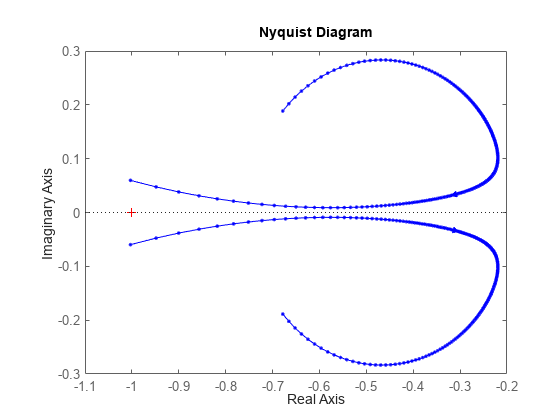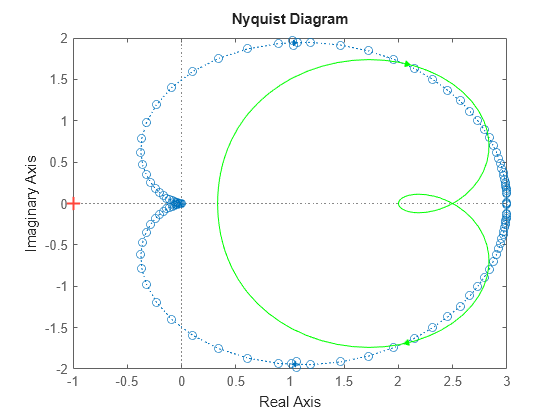nyquist
Nyquist response of dynamic system
Syntax
Description
nyquist(___) creates a Nyquist plot of the frequency
response of sys with default plotting options for all of the previous
input argument combinations. The plot displays real and imaginary parts of the system
response as a function of frequency. For more plot customization options, use nyquistplot.
To plot responses for multiple dynamic systems on the same plot, you can specify
sysas a comma-separated list of models. For example,nyquist(sys1,sys2,sys3)plots the responses for three models on the same plot.To specify a color, line style, and marker for each system in the plot, specify a
LineSpecvalue for each system. For example,nyquist(sys1,LineSpec1,sys2,LineSpec2)plots two models and specifies their plot style. For more information on specifying aLineSpecvalue, seenyquistplot.
Examples
Input Arguments
Output Arguments
Tips
Two zoom options that apply specifically to Nyquist plots are available from the right-click menu:
Full View — Clips unbounded branches of the Nyquist plot, but still includes the critical point (–1, 0).
Zoom on (-1,0) — Zooms around the critical point (–1, 0).
When you need additional plot customization options, use
nyquistplotinstead.Plots created using
nyquistdo not support multiline titles or labels specified as string arrays or cell arrays of character vectors. To specify multiline titles and labels, use a single string with anewlinecharacter.nyquist(sys,u,t) title("first line" + newline + "second line");








